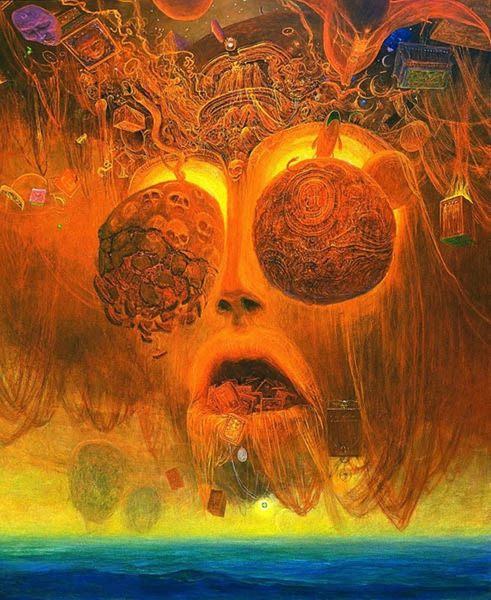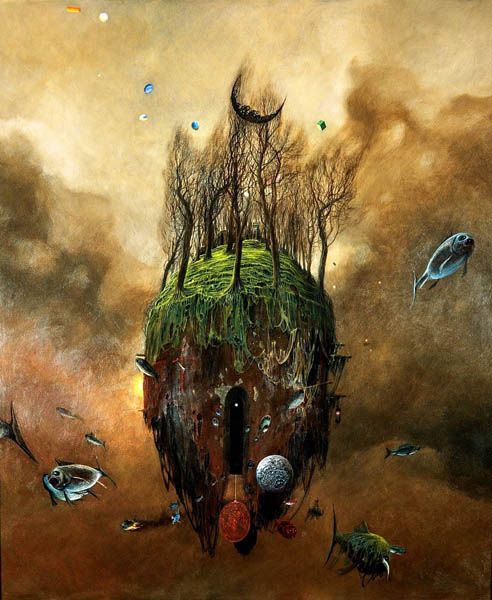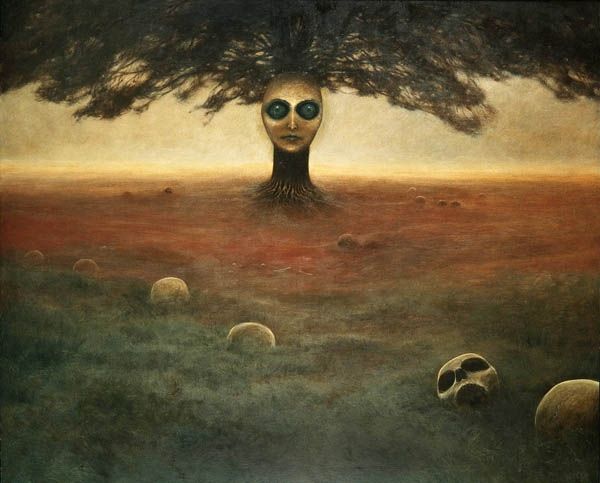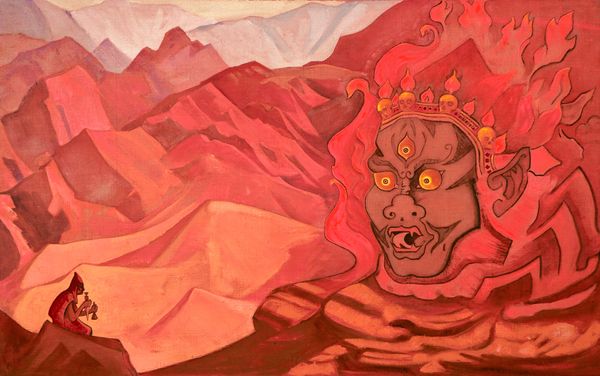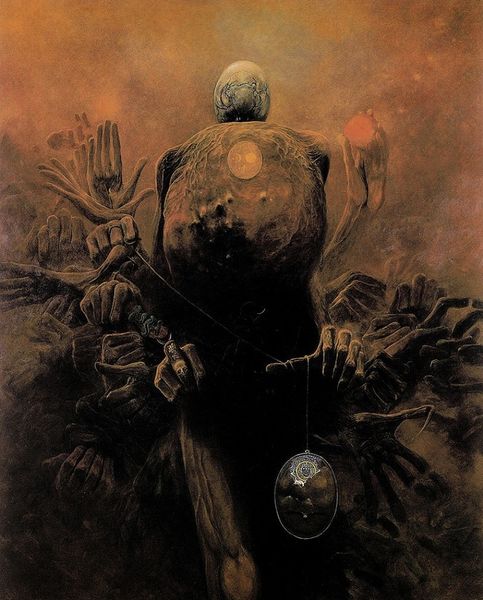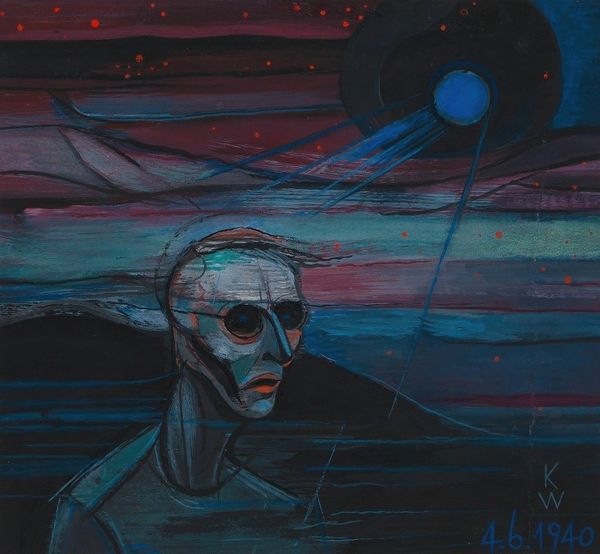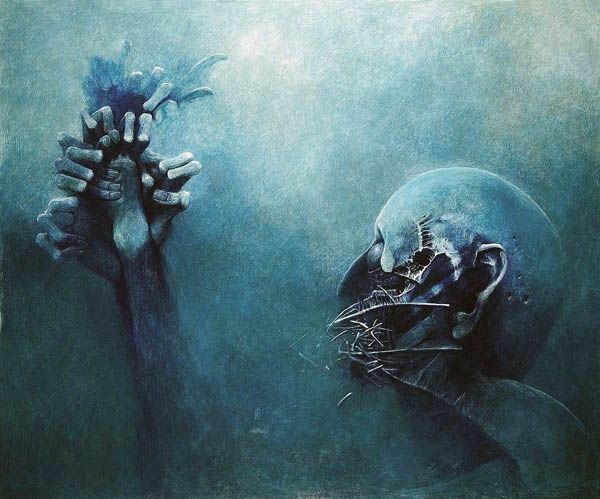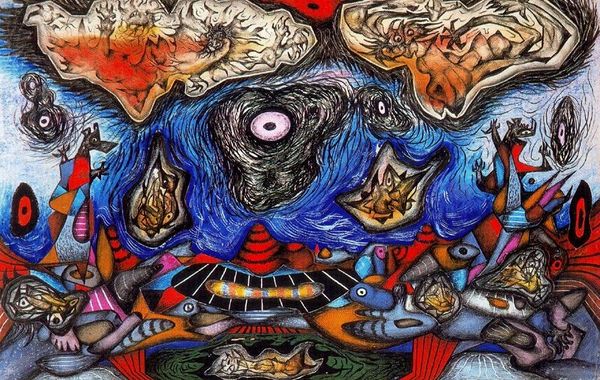
oil-paint
#
allegories
#
narrative-art
#
symbol
#
oil-paint
#
landscape
#
figuration
#
oil painting
#
neo expressionist
#
expressionism
#
symbolism
#
surrealism
#
expressionist
Copyright: © The Historical Museum in Sanok (Poland) is the exclusive owner of copyrights of Zdzisław Beksiński's works.
Curator: This haunting and evocative piece is an untitled oil painting by the late Polish artist, Zdzislaw Beksinski. What are your initial thoughts? Editor: Eerily compelling! There’s an almost unsettling stillness, a dreamscape tinged with both melancholy and threat. The blue figures seem disconnected, lost in thought against this strange, sepia-toned panorama. Curator: Indeed. Beksinski’s process was quite unique. He often worked without preliminary sketches, letting the composition emerge intuitively as he manipulated the oil paint on canvas. It speaks to a raw, almost unconscious processing of anxiety and internal pressures that manifest in such dystopian visions. Editor: I am struck by the almost theatrical presentation – that isolated structure atop the hill is certainly evocative, with the distressed figure reminding me of silent screams about our increasingly unstable world, one plagued by the legacy of political alienation. Then there is the symbolism. The bird. The medallion. How do they relate to contemporary issues like climate precarity, political unrest, and cultural displacement? Curator: Let's look closer. The recurring motif of skeletal figures throughout his work can be viewed from a materials perspective: it evokes themes such as decay and temporality, as if life's artifice itself will corrode to base elements. The figures prompt our contemplation of materials’ permanence, set against themes that undermine any notion of such stability. The surreal landscapes hint at the artist’s social commentary by examining existential issues regarding decay. Editor: That's a great point. Perhaps the decay serves as a metaphor for cultural corruption and societal ills, urging us to challenge power imbalances and address these crucial discussions via open conversations about the politics around who holds sway over art consumption versus actual production power structures—and also what materials artists are given vs what materials actually cost both economically and emotionally from start til product culmination as ‘art.’ Curator: Precisely! There's also an almost devotional craftsmanship present, in which he treated surfaces until an unsettling luminosity developed within certain works. The result offers tactile experiences meant, possibly to trigger not only societal responses through conceptual methods but perhaps even corporeal reactions related or tied almost religiously toward tangible artistic labor done justly. Editor: Understanding that artist labors, though...It's difficult, but if art can do one job for societies around each planet, perhaps its primary calling always involves asking big complicated ones, whether they're nice for us culturally, especially right now with digital commodification becoming far much pervasive, rather more so now when our rights feel less solid everyday. Beksinski pushes those sorts buttons successfully during his entire professional dedication here using paint application alongside material sourcing decisions carefully over a considerable lengthy profession’s career arc – one very worth pondering nowadays thanks primarily to Beksinski. Curator: It truly pushes you! This particular piece continues challenging each time, compelling to engage directly with humanity today itself perhaps even through our ongoing modern human anxieties together forever since time since now itself since forever always. Editor: Yes; let those explorations linger alongside ourselves.
Comments
No comments
Be the first to comment and join the conversation on the ultimate creative platform.


